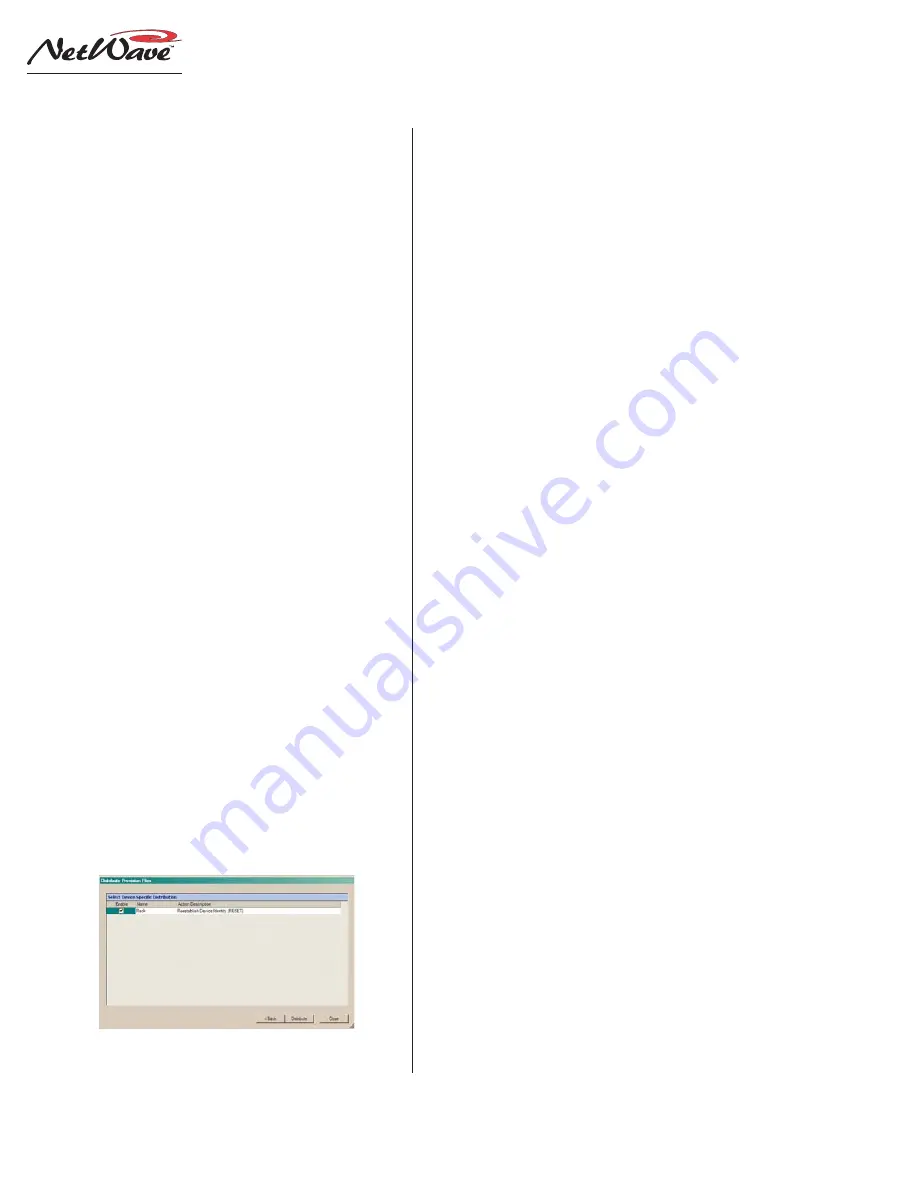
Revision A • 6/06
H
A
R
R
I
S
C
O
R
P
O
R
A
T
I
O
N
4-8
4 Linking the NetWave
the
Distribute... button opens a window with
the three distribution options: perform a nor-
mal console download (where only changed
files are replaced on the console); perform a
forced download (where all console files are
replaced by the files provisioned by VMCC);
or save the provisioned files to the setup
computer’s hard drive.
Click a radio button to select the distribu-
tion method, then click the
Next button. If
Local Download is selected, a save dialog
box opens to the
My Documents folder. If
necessary, change folders, then click
Save.
When Normal or Force Download is se-
lected, VMCC opens a Device Specific Distri-
bution window while checking that it can com-
municate with the various community devices.
This window also lists the action that will be
taken after the files are distributed. To send
the files, the device must be enabled (double-
click on the Enable boxes to add or remove
the check mark).
Click
Distribute to download the provi-
sioned files to the enabled devices. When
Force Download was selected in the previous
screen, as shown above, then each device will
“Reestablish Device Identity (RESET).” Nor-
mally, when a NetWave is added, only the
publish files are changed, so an initialize
router will be performed. This is less intru-
sive then the Reset command, and should
cause minimal signal disruption.
The edgedevice.ini file will also have
changed if any TINI Dual Routers were
added. This causes an init RCED (initialize
Remote Control Edge Devices) command to
be performed which causes each edge device
served by the parent device to be reset. This
means existing source selector panels cannot
be used for about three to five minutes while
the panels restart and reread the updated
edgedevice.ini file information.
Device-Specific Distribution List Window






























